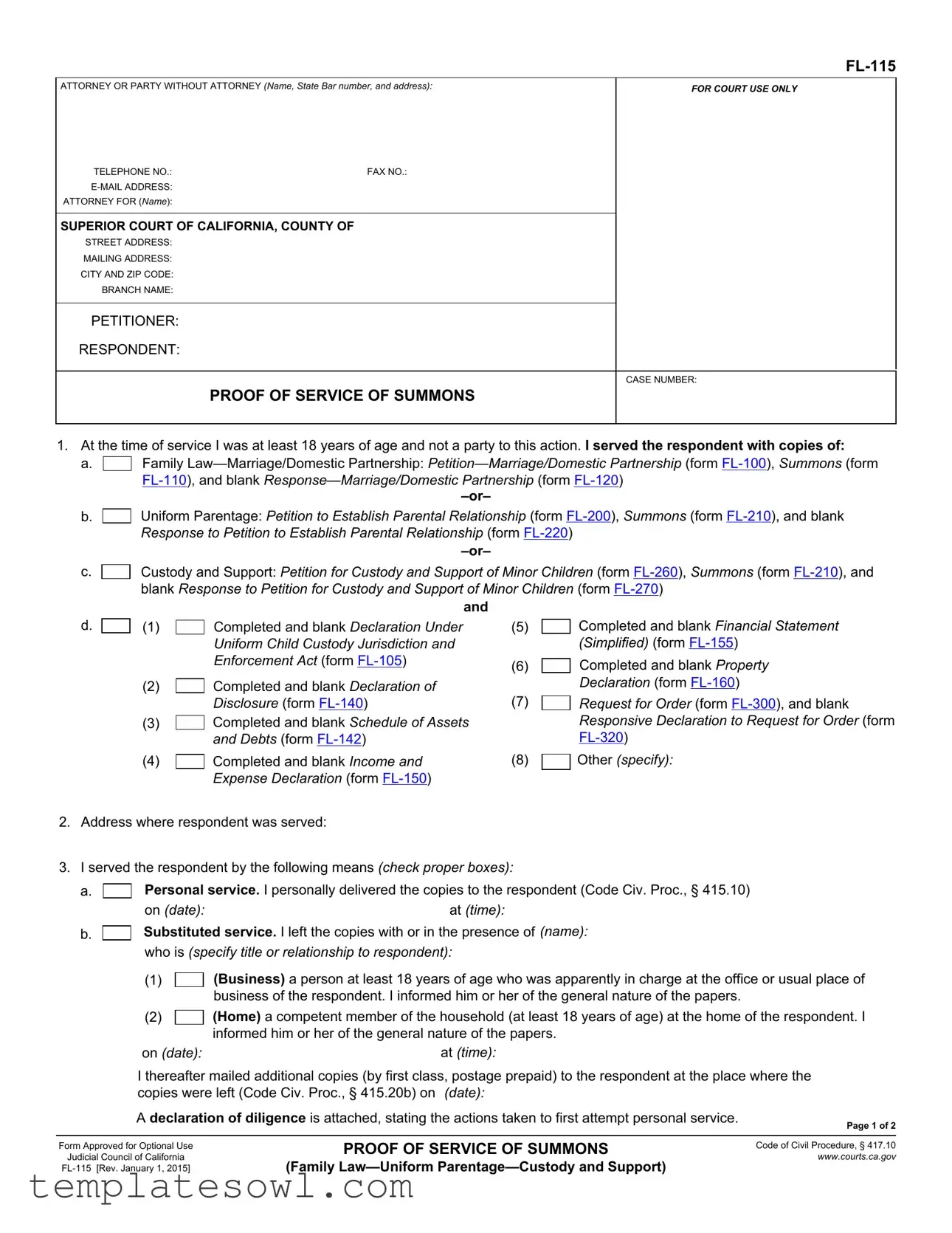What is the FL 115 Proof Of Service form used for?
The FL 115 Proof Of Service form is used to show that legal documents, such as a summons, were properly served to the responding party in a family law case. It provides the court with evidence that the respondent has received official notice of the legal action being taken against them.
Who can serve the documents for the FL 115 Proof Of Service form?
Anyone who is at least 18 years old and not a party to the case can serve the documents. This means that friends, family members, or professional process servers can carry out the service, as long as they meet these criteria.
What documents need to be served alongside the FL 115?
The documents that may need to be served include a petition, summons, and other related forms depending on the case type, such as the Response to Marriage/Domestic Partnership, Petition to Establish Parental Relationship, or Petition for Custody and Support. A comprehensive list of the required documents is provided in the form itself.
What are the acceptable methods of service?
Service can be accomplished in several ways, including personal service, substituted service, and mail. Personal service involves delivering the documents directly to the respondent. Substituted service allows for delivery to another responsible person at the respondent's home or office. Mail service requires sending documents via first-class mail, often accompanied by a Notice and Acknowledgment of Receipt.
What information is required on the FL 115 form?
The FL 115 form requires specific details such as the address where the respondent was served, the method of service used, the date and time of service, and the name and contact information of the person who served the documents. It also requires a declaration confirming the truth of the information provided.
Is there a fee for service of process?
If a process server is hired, there may be a fee for their services. The FL 115 form includes a section to specify this amount. Alternatively, a person who serves the documents on their own may not charge a fee.
What happens if the respondent cannot be served?
If the respondent cannot be located to receive service, the person attempting to serve documents must usually file a declaration of diligence. This document explains the efforts made to locate and serve the individual. The court may allow alternative methods of service in such cases.
How is the FL 115 form submitted to the court?
Once the FL 115 form is completed and signed, it should be filed with the court where the case is pending. It is advisable to keep a copy for personal records. Depending on the court's rules and procedures, filing can be done in person or electronically.



 Family
Family 